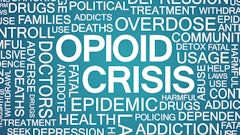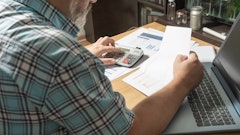
Your balance sheet is the financial statement that tells you what you own and what you owe. The balance sheet lists out your assets – cash, receivables, inventory, equipment; your liabilities – payables, credit cards, loans; and your equity – owner contributions, distributions, and retained earnings. Your balance sheet tells you the “net worth” of your business. While this net worth is not the market value of your business, it does help you to see how healthy your business is. A balance sheet is a point-in-time report. This means that your balance sheet represents the various balances you own and owe as of a specific date. Typically, you run a balance sheet on the last day of the month to use as a part of your monthly financial analysis.
What’s on the Balance Sheet?
Assets
The assets section of your balance sheet lists out the various assets that your business owns, including your cash, receivables due from customers and others, inventory, and fixed assets.
Liabilities
The liabilities section of your balance sheet lists out what you owe to others, whether it be to your suppliers, your bankers, government agencies, related entities, etc.
Equity
The equity section of the balance sheet represents the owner’s value in the business. This section will show money contributed to the business by the owner, money taken out of the business by the owner, and retained earnings. Retained earnings are those earnings from prior periods.
Current vs. Long-Term
Further breakdowns in your balance sheet will separate your current assets and liabilities from your long-term assets and liabilities. Current assets are those assets that can be converted into cash within 1 year. Examples of current assets are cash, accounts receivable, inventory, and other short-term assets. Long-term assets are those assets that will take longer to convert to cash. These are items like buildings, equipment, and vehicles – assets that you can’t sell easily or wouldn’t get the full value if you were to sell quickly.
Your Balance Sheet and the Health of Your Business
Your balance sheet can help you to evaluate the health of your business. A healthy balance sheet will have more assets than liabilities. If your total assets equal more than your liabilities, then you can have some level of comfort, knowing that you have enough cash, or things that can easily be turned into cash, to pay off your liabilities. If your total assets balance is less than your total liabilities balance, your business doesn’t have enough assets to cover its liabilities. You’re highly leveraged. If you had a slowdown in the business, you would struggle to meet your payment obligations because you don’t have enough reserves.
Bankers, investors, and potential acquirers use the balance sheet to evaluate the health of the business. You may have a strong-looking P&L, but if you are managing your cash and resources poorly, your balance sheet will show it.
Reviewing Your Balance Sheet
Your balance sheet also helps to ensure the accuracy of your financials as a whole. You should review your balance sheet regularly. You should understand every account and every balance that is represented. If there is a loan on your balance sheet for a car that was traded in 3 years ago, it’s likely the loan payments were not being recorded correctly. If they weren’t recorded correctly, then the interest expense was probably over or under-stated. This could reflect an error that crosses over multiple years.
If you find that you have negative balances on your balance sheet, this likely also represents transaction errors. Something may have been posted to the balance sheet account that should have been recorded as an expense. Or, it’s possible there were duplicate transactions recorded.
While many business owners only pay attention to their profit & loss statement, it’s important to review the accuracy of the balance sheet to ensure the information reported on the profit & loss statement is reliable.
Make sure you always know what every account is, why it is there, and be sure that the balance seems reasonable. If you know that you do not have $200,000 in the bank and you’ve never had $200,000 in the bank, then a $200,000 balance on your balance sheet in your bank account is not reasonable. Investigate.
Use It!
Understanding the importance of your balance sheet and the critical information it provides is essential to your regular financial analysis. Your balance sheet review should be part of your regular evaluation of business performance. You should understand every account on your balance sheet and each balance represented. And, you should look to see improvements in your balance sheet each month – Asset balances growing or Liability balances decreasing.




























